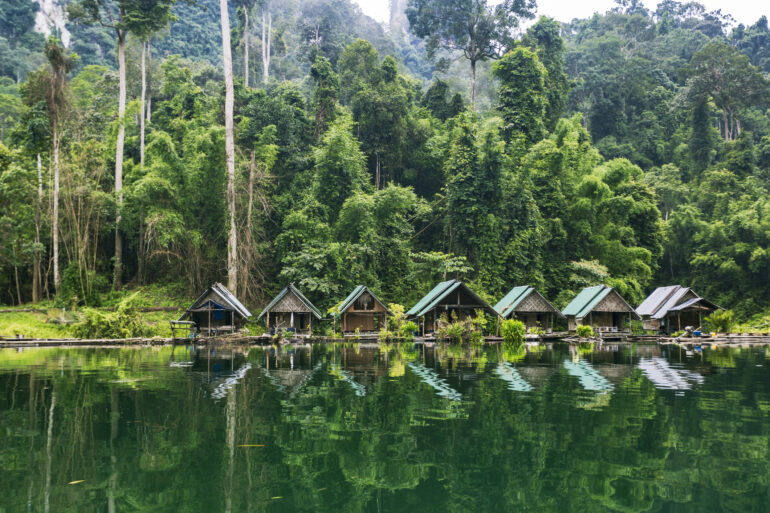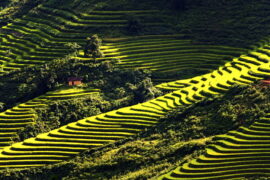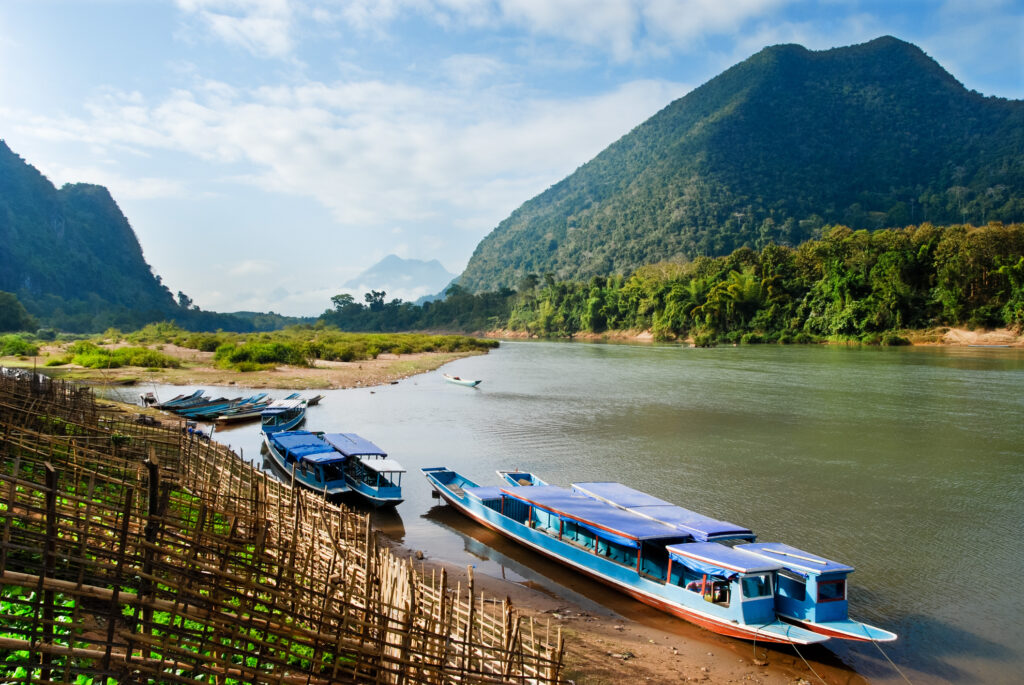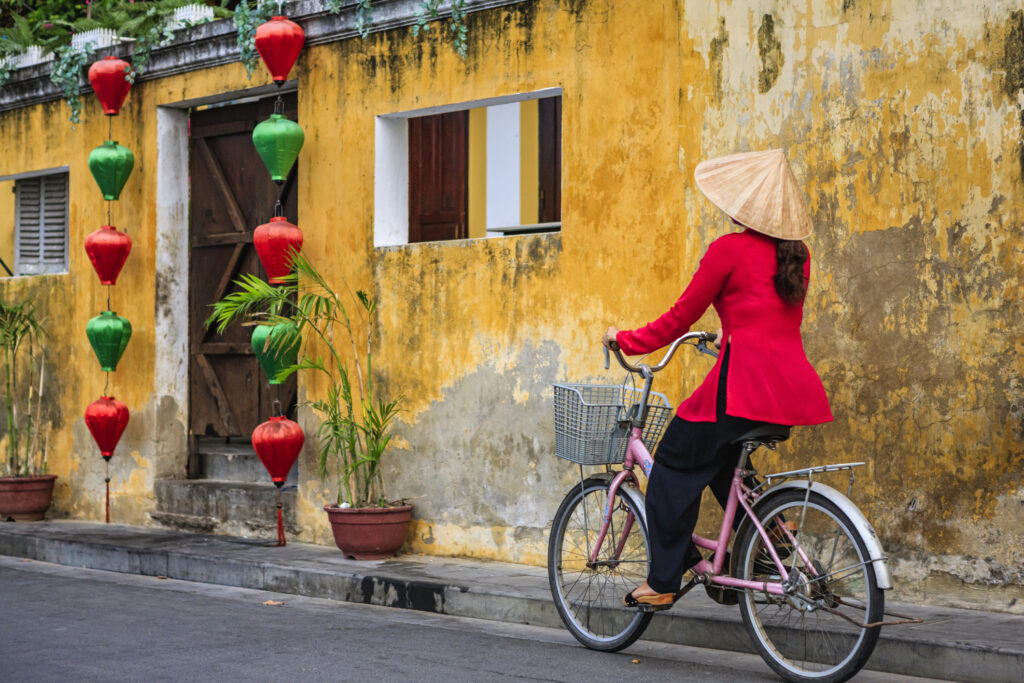When to go to Thailand: weather, seasons, monsoons
Thailand has a tropical climate consisting of two seasons: dry and wet. Dry season is November to early May, when you can expect warm weather throughout the country – but that’s not the only time of year you should consider travelling. Each season has its pros, cons and unique charms.
November to early May: dry season/high season
Northern and central Thailand:
- Northern and central Thailand’s dry seasons run from November to May. There will be little or no rain during this time.
- November and December temperatures tend to be relatively cool, with daily averages getting as low as 17-20°C in the mountains
- From mid-January things start to heat up, with temperatures in the high thirties (and even the low forties) becoming the norm throughout March, April and May.
Southwest coast
- On the west coast, the weather’s at its best from November to March – when cool winds help to stave off humidity and keep temperatures at a comfortable average of 29-32°C.
- From March to May, the winds cease, leaving the humidity to rise with the temperature – which often hits the mid-thirties.
- If you’re into diving or snorkelling, popular sites such as the Surin and Similan Islands are open to visitors November to May
Southeast coast
- December to February offers warm weather (in the upper 20’s) with almost no rain.
- Cool winds help to keep the mercury from creeping too high and create the ideal conditions for water sports
- From March until May, temperatures start to rise, hitting a daily average of 29-35°C.
Useful to know:
- Warm weather guaranteed and no rain-related issues like landslides, flooding etc. to disrupt your plans
- January to April is slash-and-burn season in the north – a time when farmers burn off last year’s crops in preparation for the new growth that comes with the wet season. This can mean that rural areas can become quite smoggy, and scenic views may be obscured.
- Fun dry-season events include one of Thailand’s most beautiful festivals, Loy Krathong (festival of light) in November and Songkran (Thai New Year) in April. The exact dates of both vary year to year, depending on the lunar calendar
- You can guarantee that boat trips and boat transfers are running, plus the calm seas make it a perfect time for diving and snorkelling
- From December to February, the cooler temperatures in the north make it a great time of year for hiking
Late May to October: wet season/low season
Northern and central Thailand
- Sizzling thirty-something temperatures can (and often do) continue well into rainy season, and the resulting humidity can make travelling uncomfortable
- Thailand’s monsoon begins as shorter downpours in June, gradually getting heavier and more constant as the season progresses
- The monsoon peaks in August and September.
- As the rains begin, the rice is planted and grows throughout the wet season, culminating in lush green and gold fields in September/October before the November harvest.
Southwest coast
- Monsoon rains arrive at the west coast in late May, usually taking the form of short afternoon downpours. Peak rainfall levels tend to occur between September and October.
- Visiting western Thailand during wet season? We recommend taking advantage of the lower visitor numbers to enjoy activities away from the coast – like spending time in Khao Sok National Park, which is richly verdant at this time of year.
Southeast coast
- The rain starts to hit the east coast in June, with afternoon downpours likely – but, with fewer visitors around, this can still be a great time of year to visit the beach.
- Our recommendation? Spend your mornings enjoying the beaches, then retreat to the spa for the afternoon while it rains. You can emerge refreshed for a sunset cocktail as the rains clear!
- The monsoon arrives in earnest around September, bringing heavy rains, high temperatures, and a rise in humidity – though the odd sunny spell isn’t uncommon. Rainfall peaks between October and November.
Useful thing to know about wet season holidays:
- It doesn’t rain all day! Monsoon showers tend to be intense, heavy deluges not day-long drizzle so you can have plenty of dry-time outdoors.
- The tropical rain can be super refreshing – it’s like a warm shower, a welcome relief after the heat
- Some evenings, you get to see stunning storms. Think brooding purple skies and lightning flickering out over the water at night.
- Lots of the countryside becomes lush and green, so you get great photos compared to the grumpy dry grass and empty paddy fields of the dry season
- It’s the quietest time to visit – there are far less people in your classic tourist photos of temples
- It’s cheaper
- Despite being hot, it’s annoying to wear sandals as they become slippery on the wet pavements, and you’ll get very wet feet with all the puddles/ road rivers which appear when it rains.
Are you planning a trip to Thailand? Our expert travel consultants can help you design a trip to make the most of the weather at any time of year. Our Kingdoms of Thailand itinerary is a great starting point if you’re looking for inspiration. Contact us to find out more.



